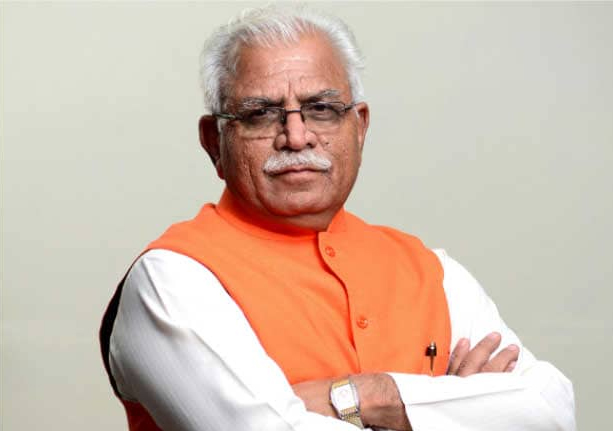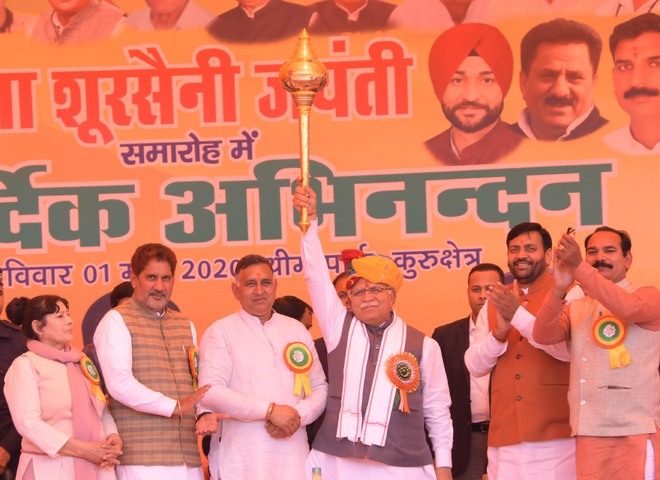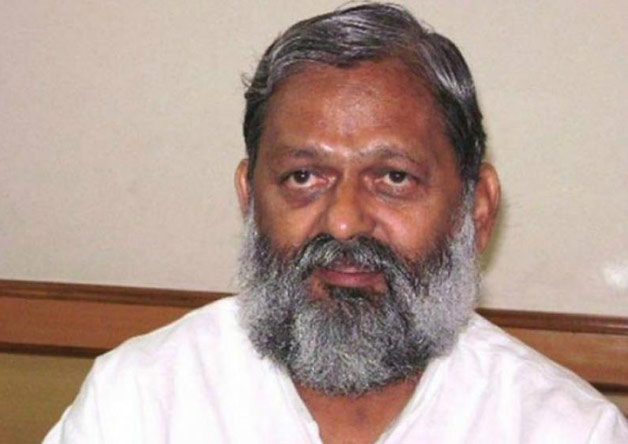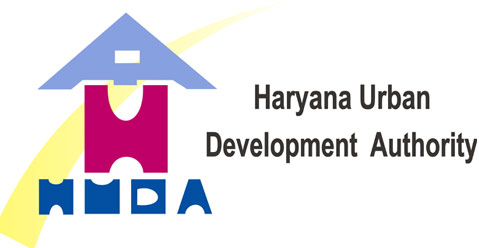Haryana Chief Minister has Accorded Approval for the Proposal of Implementation of 13 Projects
Haryana Chief Minister, Mr. Manohar Lal has accorded approval for the proposal of implementation of 13 projects under the Integrated Watershed Management Programme (IWMP) in six districts namely Hisar, Bhiwani, Mahendragarh, Rewari, Ambala and Yamunanagar.
Under these projects as many as 76 micro watersheds would be set up in Haryana at a cost of over Rs.71.13 crore. These 13 projects would be implemented over the next 7 years. The main objective of IWMP is to restore ecological balance by harnessing, conserving and developing degraded natural resources such as soil, vegetative cover and water.
Sharing more information, an official spokesman said that in Loharu and Behal block of Bhiwani district, 10 micro watersheds will be set up in Bardu Mugal, Bardu Dhirja, Bhudera, Bidhnoi, Ladawa, Bairan, Dhani, Lachman, Sordjadid, Sordakadim, Nangal¬Garanpura, Dhana Jogi, Sehar, Barahlu, and Damkora. Apart from this, in Dadri-II block, 4 micro watersheds will be set up in Ducihwa, Datoli, Dadhi Chillar, Chriya, Noswa, and Abidpura.
He said that in Kanina block of Mahendergarh district, 11 micro watersheds will be set up in Kharkara, Sehlang, Pota, Koka, Jharli, Chitroli, Dhanounda, Kaimla, Kakrola, Chelawas, Talwana. Apart from this, in Narnaul block 9 micro watersheds will be set up in Dharson and Niwaz- Nagar, Hazipur and Bas-Kirarod, Mai, AzamNagar and Hudina and Fizabad, Rampura, Lehroda and Silarpur-Mehta, Abdul-Nagar, Mandlana, Mehrampur, and Boprli.
He said that in a total of 14 micro watersheds will be set up in the Chhachhrauli block in Yamunanagar district. He said that 7 micro watersheds will be set up in Darpur, Darpur Forest, Jattanwala, Jattanwala and Baniyawala, Chuarpur Mangal Singh, Nathanpur and Shahzadwala Forest, Sahabudeen Pur Khurd and Kala Bachon, Shahzadwala and Magewala, Mukarampur, Dolatpur, Mohabliwala, Chikan, and Chikan Forest, Kansali and Kansali Forest. While 7 micro watersheds will be set up in Khillanwala, Bhagpat, Bhagpat Forest, Bhangra and Bhangri, Khillanwala forest, Muzafat Khurad, Bakarwal and Lasahabad, Mujafat Kala, Thimo, Karkouli Bahalolpur, Tibbi Ariyan, Hafizpur and Hafizi.
The spokesman said that 8 micro watersheds will be set up in the Hissar district. He informed that 6 micro watersheds will be set up in Sharwa, Talwandi Rukka, Talwandi Badshahpur Mohabatpur, Moda Khera, Siswal (Dhani Malian). He said that 2 micro watersheds will be set up in Mattersham, Neoli Kalan, Shahpur, Migni Khera, Jakhod-Khera, Mallapur, Neoli Khurd and Kajlan.
He said that in Rewari block of Rewari district, 7 micro watersheds will be set up in Jant Sairawas, Bhurthal Jat, Gangaychajat, Budana, Budani, Turkiawas Phadni Bhagwanpur, Daroli Dokhia and Jant. Similarly in Jatusana block, 7 micro watersheds will be set up in Baldhan KaIan, Daroli, Baldhan Khurd, Gudiyani, Nangal Tathani, Parkhotampur, Musepur and Mobarkpur. While in the Naraingarh and Barara of Ambala district, 6 micro watersheds will be set up in Panilasa, Dehar, Gadauli, Berkheri, Nagla and Tharwa.
He said that the area of these districts are most fragile and vulnerable and required watershed management interventions to address the problem and for sustainable development of the area. The project area of Hisar, Bhiwani, Mahendergarh, and Rewari district are predominantly Sandy loam to sandy clay loam in texture having undulating topography with poor organic carbon and low water holding capacity.
The annual rainfall of these districts varies from 300-550 mm which is highly erratic in nature and lack of assured irrigation in these districts generally restricts the choice of the crops and cultivars. All these factors coupled with deep and poor quality groundwater, moderate to severe sheet and gully erosion and poor vegetative cover resulting into poor productivity of the crops impacting the socio-economic condition of the people of the area.
The spokesman said that the Project area of Ambala, and Yamuna Nagar districts are mainly sandy loam to sandy clay loam in texture having an admixture of gravel and level to sloppy erosive topography. Annual rainfalls in both the districts are ranging from 1000-1200 mm.
However, rainfall as high as 1538 mm in Yamunanagar district during the year 2010 and 1492 mm in the Ambala district during the year 2000 had been recorded.

















